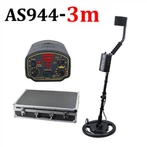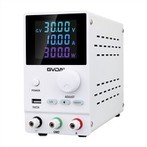Principles and Introduction to Sound Level Meters, Decibel Meters, and Noise Meters
At present, the noise meters used for measuring noise have four types of meter responses based on sensitivity:
(1) Slow ". The header time constant is 1000 ms, usually used to measure steady-state noise, and the measured value is the effective value.
(2) Hurry up. The time constant of the meter head is 125ms, which is generally used to measure unstable noise and transportation noise with large fluctuations. Fast gear approaches the human ear's response to sound.
(3) Pulse or pulse hold ". The rising time of the needle is 35ms, used to measure pulse noise with longer duration, such as punch presses, hammers, etc. The measured value is * maximum effective value.
(4) Peak holding ". The rising time of the pointer is less than 20ms. It is used to measure pulse sounds with short duration, such as gun, cannon, and explosion sounds. The measured value is the peak value, which is the maximum value.
Classification:
Noise meters can be divided into precision noise meters and ordinary noise meters based on their accuracy. The measurement error of a precision noise meter is about 1dB, while that of a regular noise meter is about 3dB. Noise meters can be divided into two categories according to their uses: one is used to measure steady-state noise, and the other is used to measure unstable noise and pulse noise.
Integral noise meter is used to measure the equivalent sound level of unstable noise over a period of time. A noise dosimeter is also an integral noise meter, mainly used to measure noise exposure.
Pulse noise meter is used to measure pulse noise, which conforms to the human ear's response to pulse sound and the average time of the human ear's response to pulse sound.
Working Principle:
A noise meter is a fundamental instrument in noise measurement. A noise meter generally consists of a condenser microphone, preamplifier, attenuator, amplifier, frequency weighting network, and effective value indicator head. The working principle of a noise meter is that the sound is converted into an electrical signal by a microphone, and then the impedance is transformed by a preamplifier to match the microphone with an attenuator. The amplifier adds the output signal to the weighting network, performs frequency weighting on the signal (or an external filter), and then amplifies the signal to a certain amplitude through an attenuator and amplifier, and sends it to the effective value detector (or an external level recorder). The noise level value is displayed on the indicator head.






